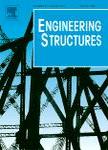版权所有:内蒙古大学图书馆 技术提供:维普资讯• 智图
内蒙古自治区呼和浩特市赛罕区大学西街235号 邮编: 010021

作者机构:Gdansk Univ Technol Fac Civil & Environm Engn Ul Narutowicza 11-12 PL-80233 Gdansk Poland
出 版 物:《ENGINEERING STRUCTURES》 (工程结构)
年 卷 期:2023年第274卷
页 面:1页
核心收录:
学科分类:08[工学] 081402[工学-结构工程] 081304[工学-建筑技术科学] 0813[工学-建筑学] 0814[工学-土木工程]
基 金:CI TASK
主 题:Machine learning algorithm Supervised learning Maximum interstory drift ratio Data-driven techniques Seismic vulnerability assessment
摘 要:Predicting the Maximum Interstory Drift Ratio (M-IDR) of Steel Moment-Resisting Frames (SMRFs) is a useful tool for designers to approximately evaluate the vulnerability of SMRFs. This study aims to explore supervised Machine Learning (ML) algorithms to build a surrogate prediction model for SMRFs to reduce the need for complex modeling. For this purpose, twenty well-known ML algorithms implemented in Python software are trained based on the dataset achieved from Incremental Dynamic Analyses (IDAs) performed on the 2-Story, 3Story, 4-Story, 5-Story, 6-Story, 7-Story, 8-Story, and 9-Story SMRFs modeled in Opensees. Then, important features of weight, fundamental period of structure (T1), the RSN number of record subsets, the direction of the record subsets, soil types, and Sa(T1) of analysis, which affect the results of predictions, were selected by trial and error. Having these important features, data-driven techniques developed in Python software were compared for predicting the M-IDR of SMRFs as target. Results showed that ML algorithms of GPReg, PLSReg, SReg, LReg, GReg, MLPReg, SVM, and LSVR had lower values of coefficient of determination (R2 lower than 0.5) in both train and test datasets. In addition, XGBoost, BReg, HistGBR, and ERTReg algorithms achieved higher values of R2 (i.e. upper than 0.95 in the 5-Story SMRF) with low Mean Squared Error (MSE) for prediction of M-IDR. Therefore, using these algorithms mitigates the need for computationally expensive, time-consuming, and complex analysis, while preliminary prediction of M-IDR can be considered a low computational and efficient tool for seismic vulnerability assessment.